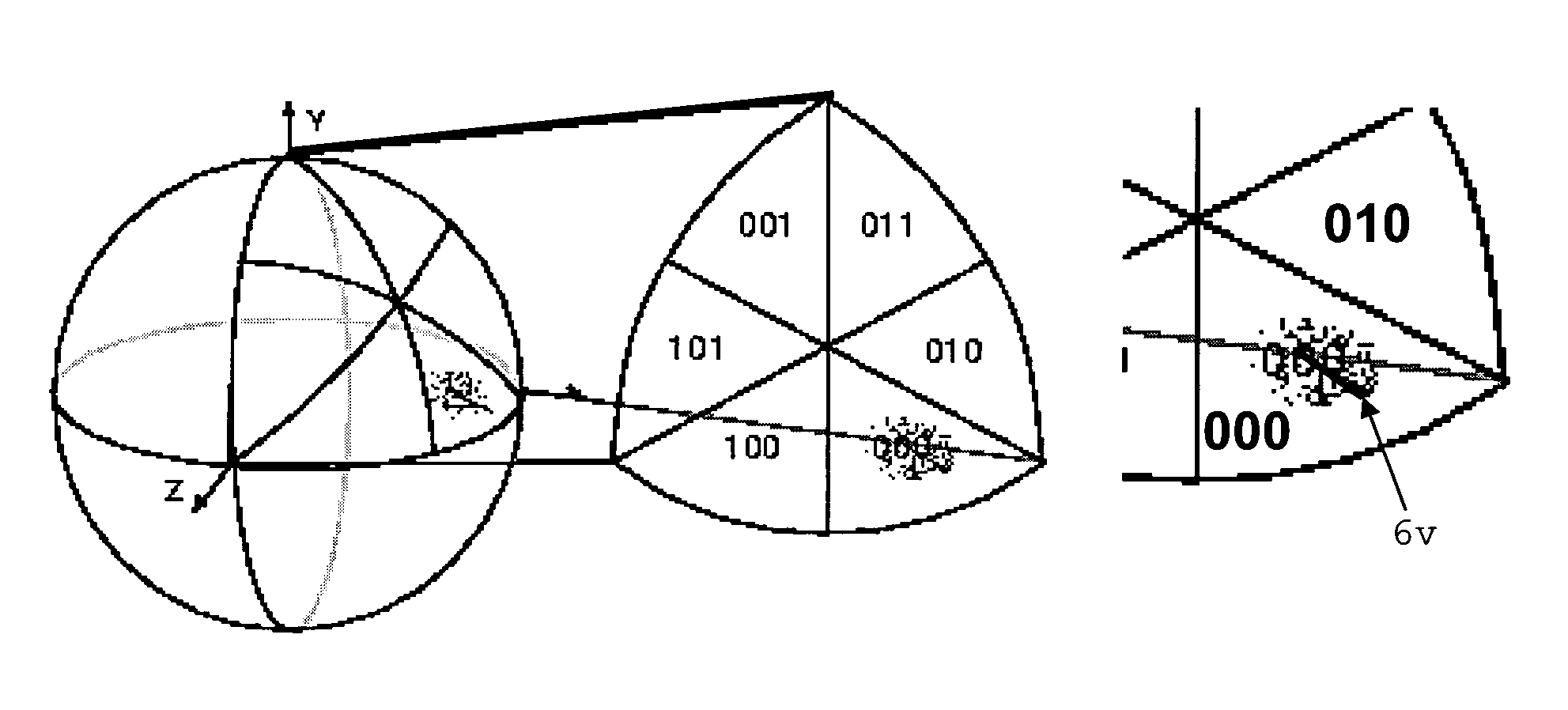Method for encoding normals of a 3D mesh model, method for decoding normals of a 3D mesh model, encoder and decoder
normal encoding technology, applied in the field of encoding and decoding of normals of a 3d mesh model, can solve problems such as uneven distribution of normals, and achieve the effect of improving compression ratio
- Summary
- Abstract
- Description
- Claims
- Application Information
AI Technical Summary
Benefits of technology
Problems solved by technology
Method used
Image
Examples
Embodiment Construction
[0030]FIG. 1 shows the sectors of a unit sphere, on which the unit normals lie. A sphere sector is obtainable by dividing a sphere into m equal spherical segments S1 and dividing each of said spherical segments into n equal sectors 000, . . . , 101. For simplicity, the dividing of a sphere into spherical segments can be done along the three Cartesian X, Y and Z axes, so that 23=8 segments result. Other methods for dividing are possible, e.g. similar to FIG. 9.
[0031]Mapping between the m sectors and n segments can comprise up to int(log2(m)+log2(n)+1) mirror mapping operations. For example, for eight segments S1 and six sectors 000, . . . , 101 there result 3 mapping operations among segments, so that most (mainly all) of the normals are mapped into a single predefined segment, and another 3 mapping operations within the predefined segment so that most (mainly all) of the normals are mapped into a single predefined sector 000.
[0032]Preferably, the normals are mapped not one-by-one, b...
PUM
 Login to View More
Login to View More Abstract
Description
Claims
Application Information
 Login to View More
Login to View More - R&D
- Intellectual Property
- Life Sciences
- Materials
- Tech Scout
- Unparalleled Data Quality
- Higher Quality Content
- 60% Fewer Hallucinations
Browse by: Latest US Patents, China's latest patents, Technical Efficacy Thesaurus, Application Domain, Technology Topic, Popular Technical Reports.
© 2025 PatSnap. All rights reserved.Legal|Privacy policy|Modern Slavery Act Transparency Statement|Sitemap|About US| Contact US: help@patsnap.com



